Chichijima. This little island is more than just a dot on the map—it’s a place with history seared into its cliffs and jungles, where WWII ruins mingle with tropical beauty and world class scuba diving. If it sounds familiar, you might be thinking of Iwo Jima—different islands, both in the Ogasawara Archipelago over a thousand kilometers from Tokyo prefecture in Japan.
For decades, this remote island in the Pacific served as a Japanese military outpost. It has an absolutely gruesome past, best known as the place where 9 American pilots escaped from their planes after being shot down during bombing raids. 8 of the 9 were captured, executed, and cannibalized by Japanese officers in late 1944.
The 9th and only survivor? Future U.S. President George H. W. Bush. It’s called the Chichijima Incident, and people say that that President Bush got revenge for his comrades by puking on the Japanese Prime Minister at a diplomatic dinner in 1992. He literally vomited into his lap.
Despite this gruesome history, Chichijima is a tropical paradise for those with a zest for adventure, a mind open to exploration, a strong stomach, and a willingness to sleep on the floor in the basement of a 24 hour ferry in the middle of the Pacific ocean.
Chichijima is one of the most exhilarating, moving, and surprising travel experiences I’ve ever had—let’s dive in!
How to get to Chichijima Island (the Chichijima ferry)
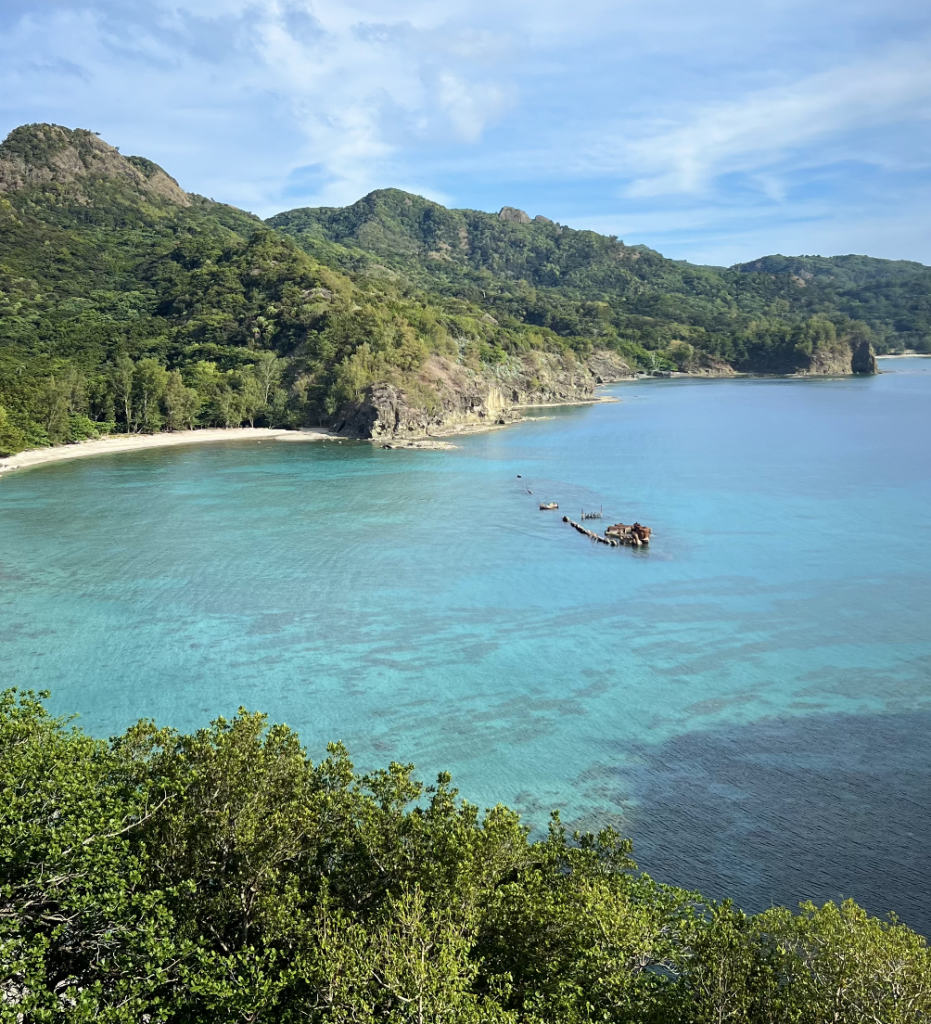
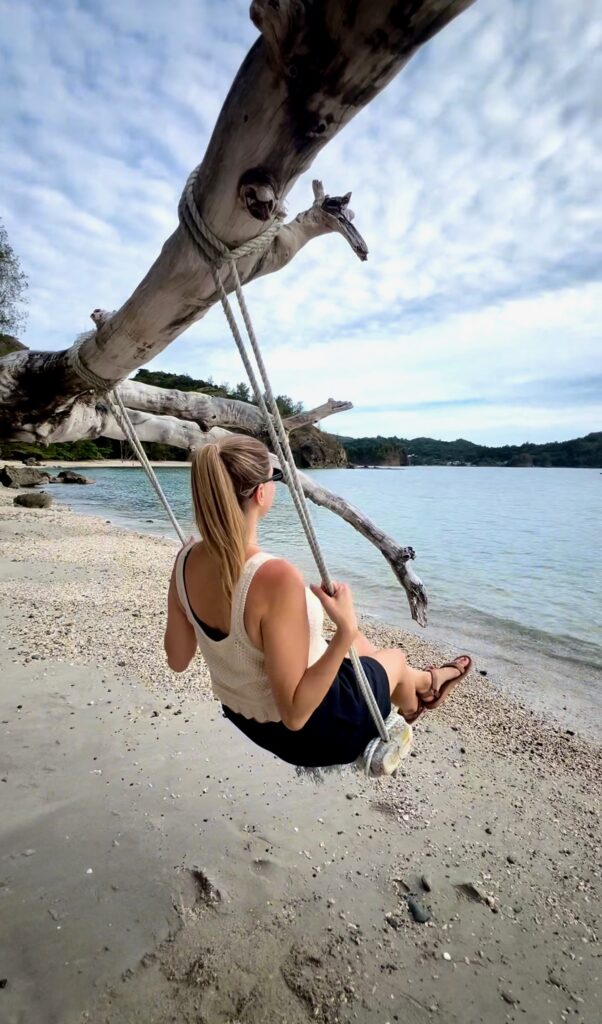
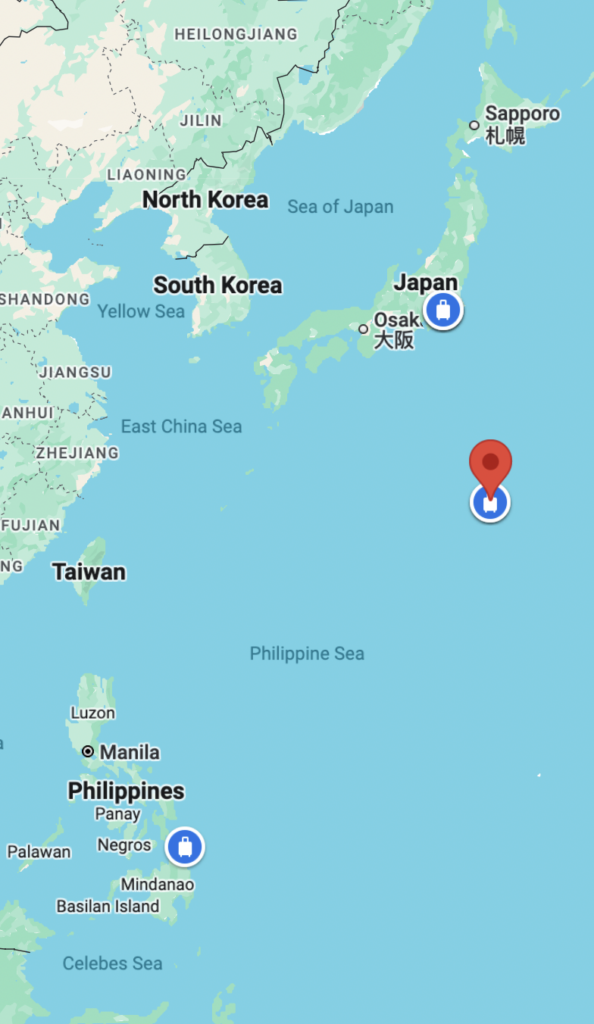
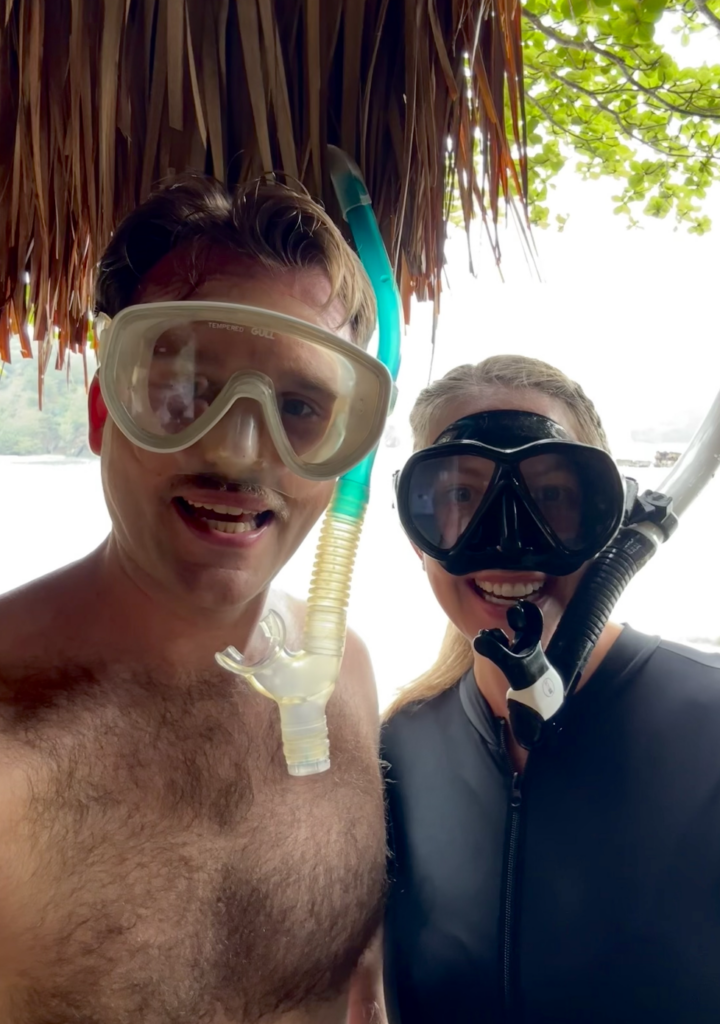
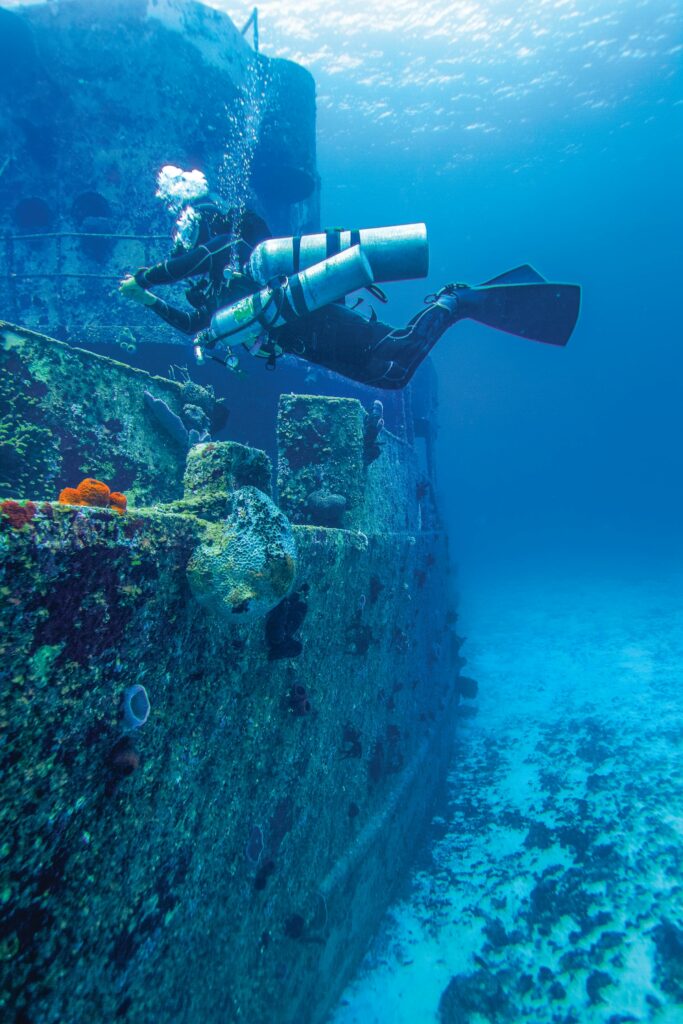
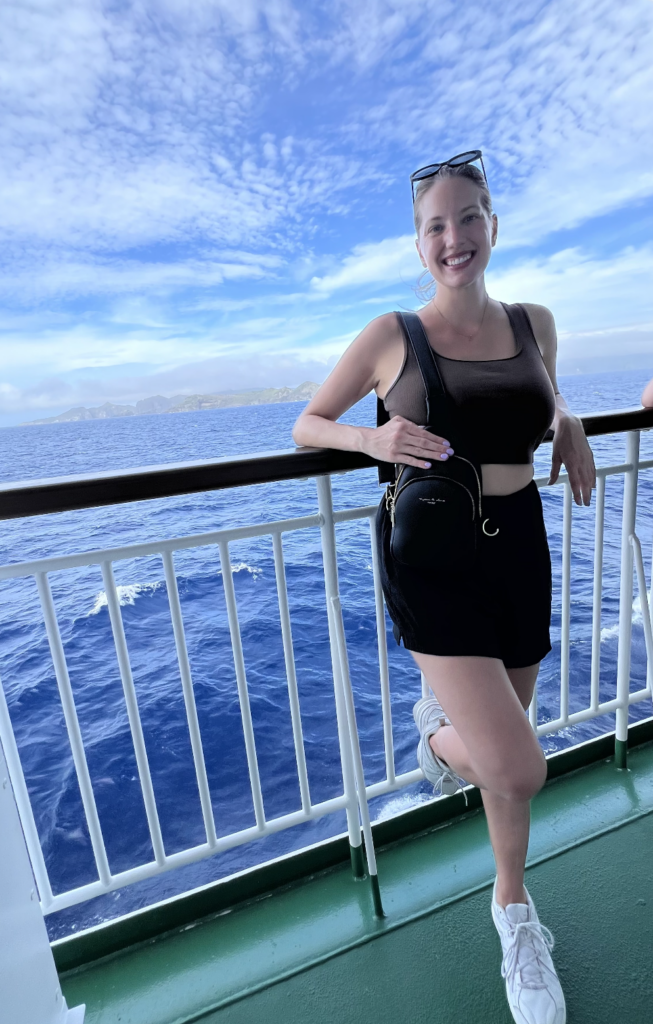
Wondering how to get to the Ogasawara Islands from Tokyo? You may or may not like my answer.
The only way to get to Chichijima is via a 24-hour ferry ride on the Ogasawara Maru (schedule and fares for the Ogasawara Maru here!). I like ferries in general, and overall I enjoyed the experience, but it was still brutal if you get any kind of seasick.
There are 6 classes on the ship, from a Suite-like hotel room with a window and private bathroom down to last-class Economy, and every option is expensive if you’re on a sh*t budget like me!
We stayed in Economy, and when I say expensive, I mean expensive: the ferry from Tokyo to Chichijima in Economy cost over 220 USD per person. This got us a plastic mat on the floor with a brick-like pillow in the bowels of the ship in a crowded, low-ceilinged, gymnasium-like room with rows of strangers about 2 feet apart. We also had access to a public bathroom with sinks, showers, and a special sea sickness sink.
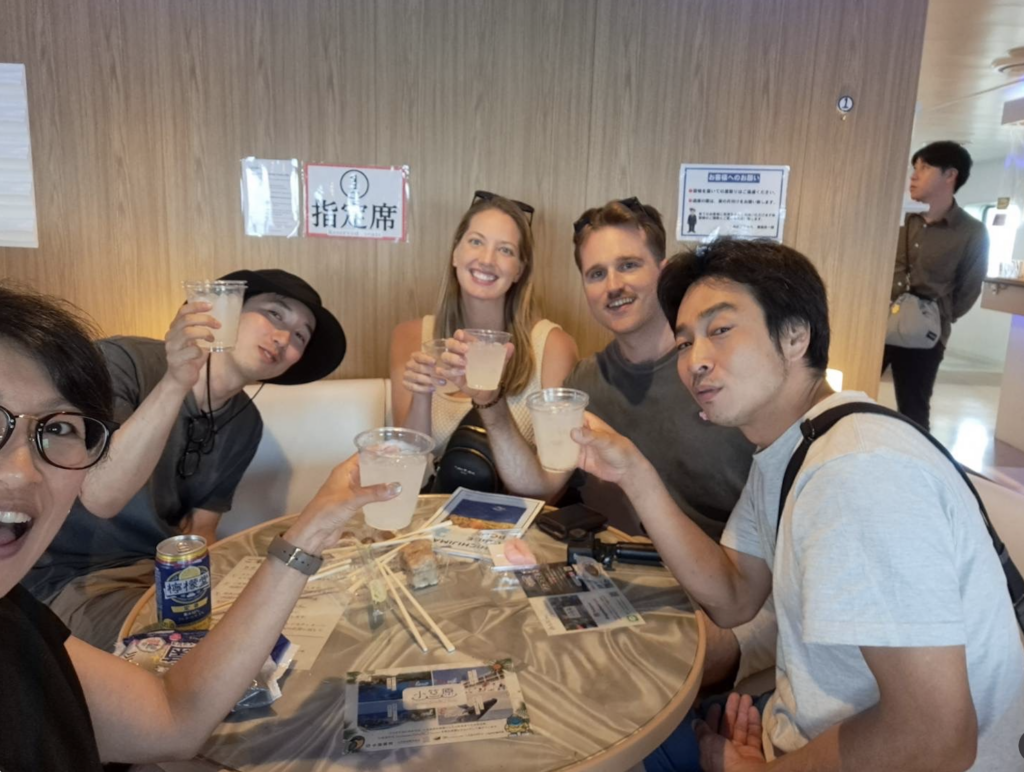

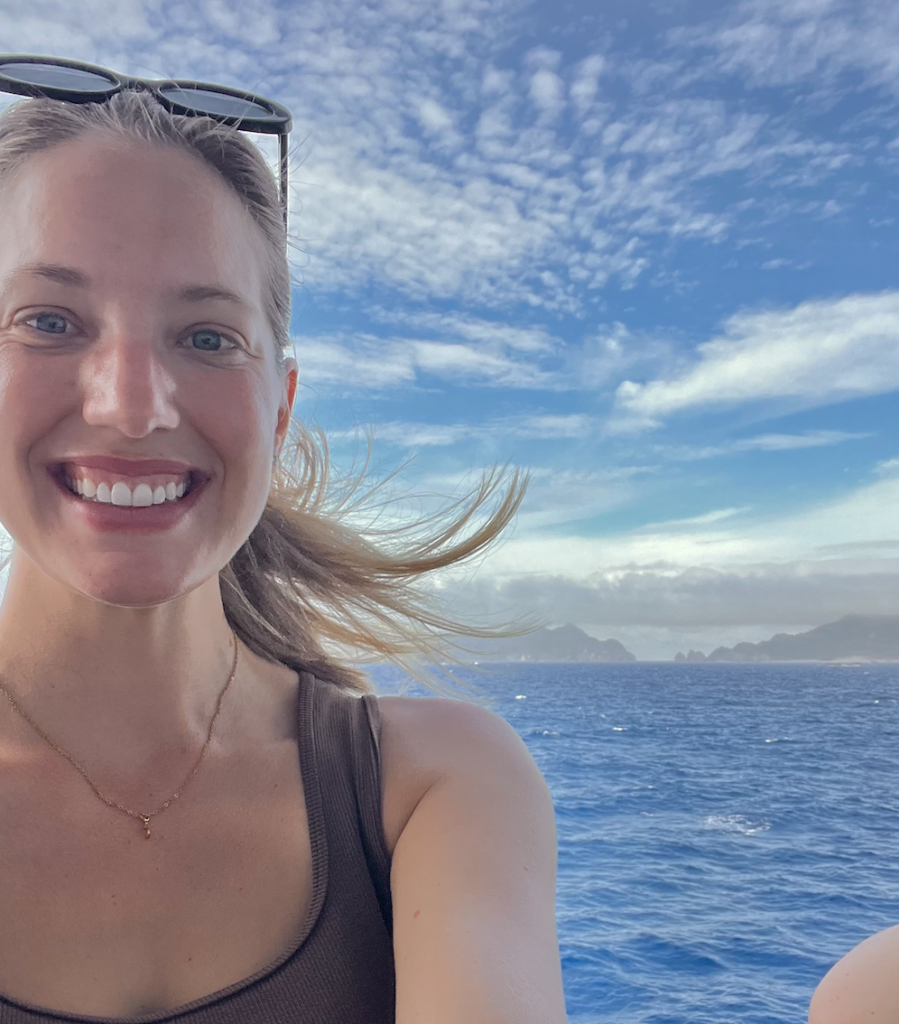
Despite the rustic (yes, rustic meaning it sucked 😅) sleeping situation in Economy, we had a great time meeting a local family in the upper deck cafeteria, tossing back beers, practicing our Japanese, and sharing stories to pass the time.
What to do in Chichijima: Beaches, history, tide pools, diving, hiking, birding, and more!

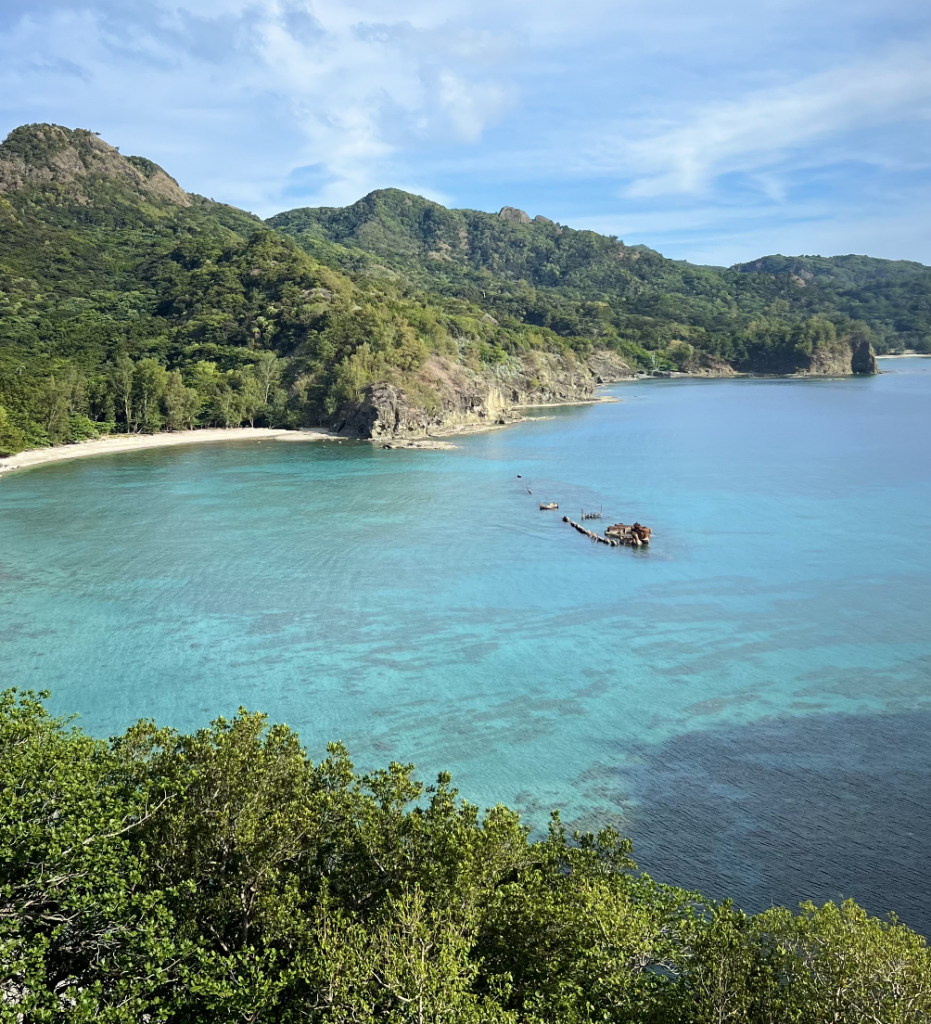
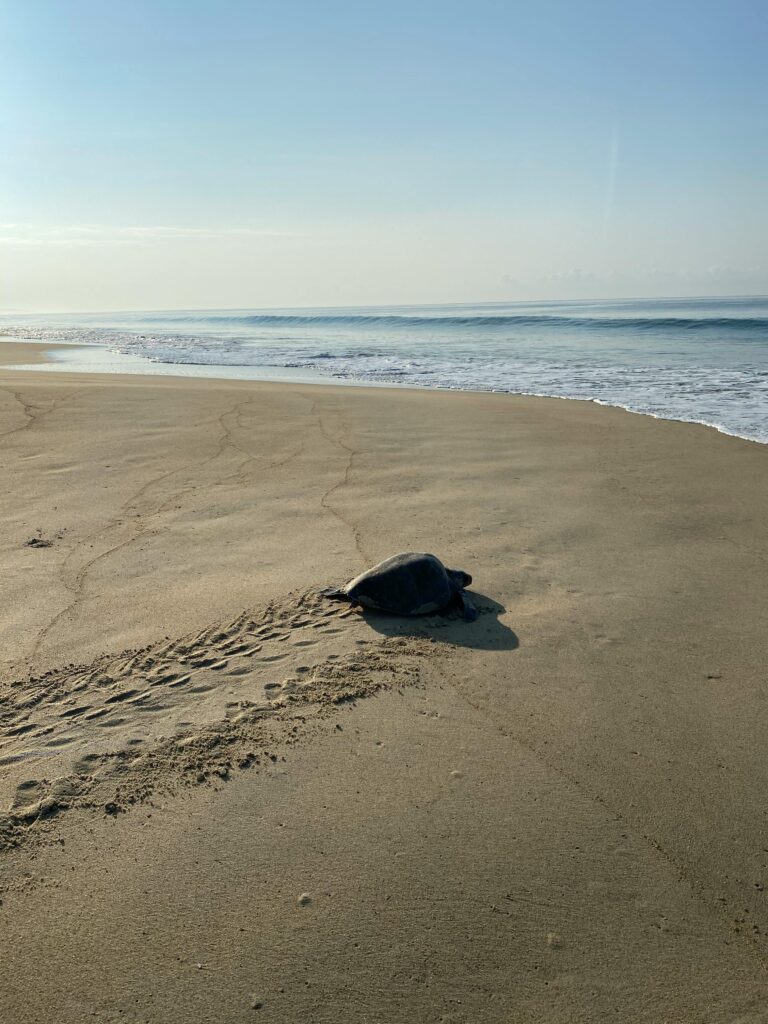
Chichijima beaches
There is a lot to do and see in Chichijima, and unsurprisingly, even its beaches are special!
Kominato Beach
Kominato was my favorite beach on Chichijima island. It’s a wild stretch of sand flanked by sea caves and covered in turtle tracks! We wandered through the caves, ankle-deep in tidal pools, discovering little pockets of marine life along the way (The dunes had fresh tracks from sea turtles, marking their journey from the ocean to nests hidden in the dune grass. This place felt like a quiet, secret world— and the best part was that we didn’t see a single other person here! It’s also a great place to catch the sunset.
Two other beaches I recommend, one of which is 100% UNMISSABLE, are:
Sakaiura Beach
Sakaiura Beach features the partially submerged wreck of the Hinko-maru, a Japanese warship which was torpedoed and sunk in the shallow waters just off the beach during WWII (in the middle picture above!) You can swim or snorkel to explore the shipwreck and reef from the beach! I’ve never seen anything like this, and it was incredible to explore it with just a few other people around!
It’s a steep walk up and down from the road to the beach, but it’s only 5-10 minutes of pain before you reach this special place!
Kopepe Beach
Located in the same bay as Kominato Beach, Kopepe Beach is another beautiful white sand beach with super clear, blue water that’s great for snorkeling and swimming. The beach has underwater markers that point out the species of coral that are unique to the Ogasawara Islands, which I loved!
Uncovering WWII history with a local family
The best experience we had on Chichijima came from the chance encounter at the bar I had on the ship with a local family, who we had a blast hanging out and drinking with to pass the time! They later offered to show us the island’s hidden WWII sites, and we were stoked to take them up on the offer.
They picked us up in their van a couple days after we arrived and we drove off along the windy sea cliffs into the jungle. After parking, we followed them on foot through dense jungle trails, spotting remnants of the island’s past—a bombed-out bunker, lookout caves with intact cannons carved into the cliffs, and a rusted out WWII radio communications center. At one spot, we even had a bird’s eye view of the skeleton of the torpedoed ship at Sakaiura Beach, half-swallowed by the sea.
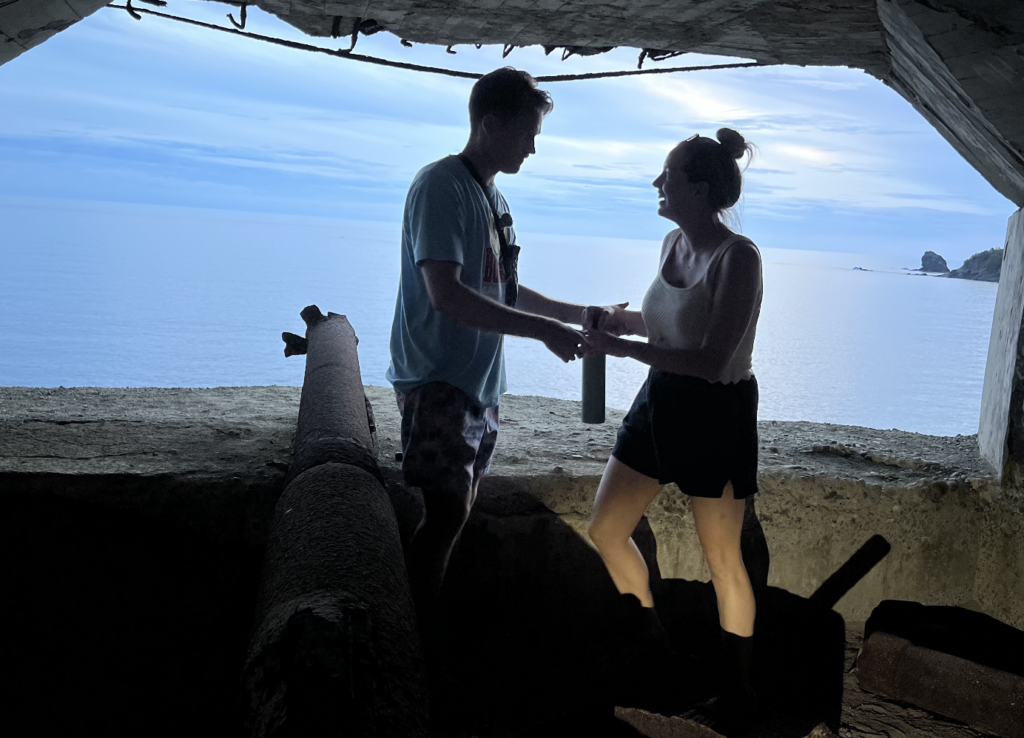
Learning from this family, standing in these spots and hearing their stories, made the history come alive in a way that I’ll never forget. It was another reminder that travel is so much richer when you talk to locals– don’t just hide at your resort, go on guided big-box tours, or stick strictly to your itinerary! I always find that people are excited to share and connect with visitors, and it just takes a little courage (and sometimes a couple of beers) to strike up a conversation– you never know where it will lead!
Diving deep: Scuba diving a WWII shipwreck in Japan (including a dive shop review!)
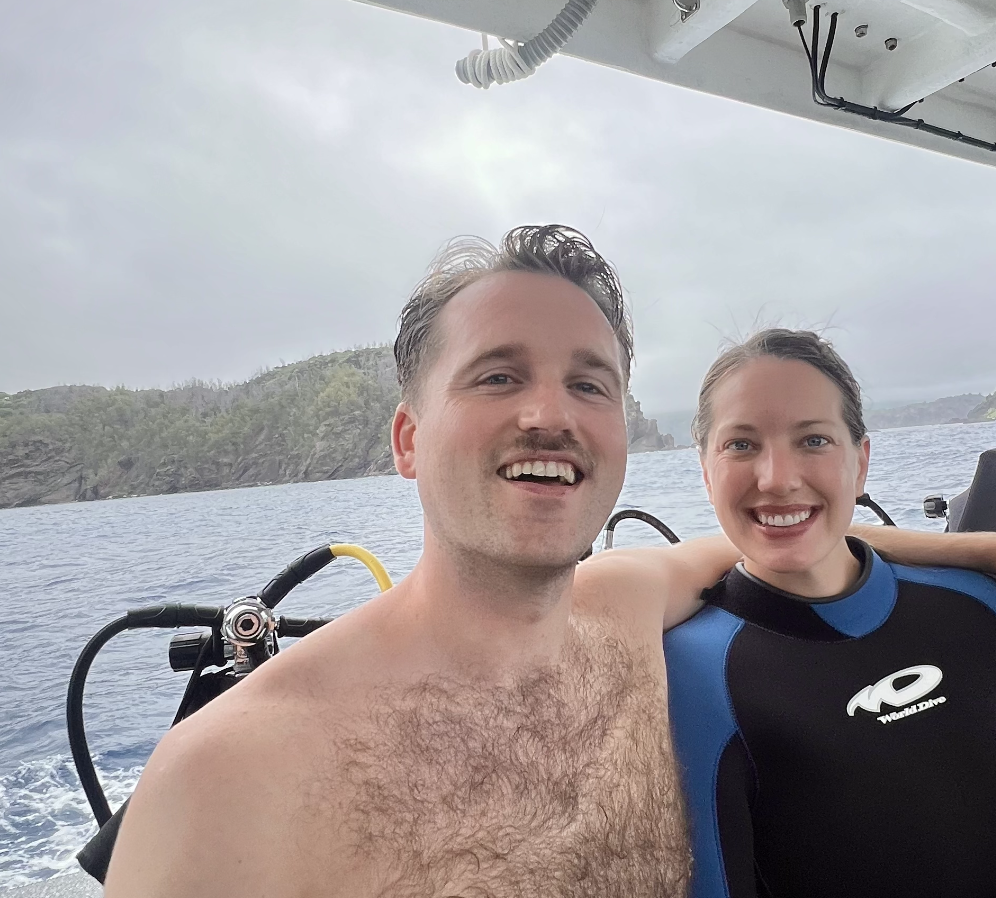
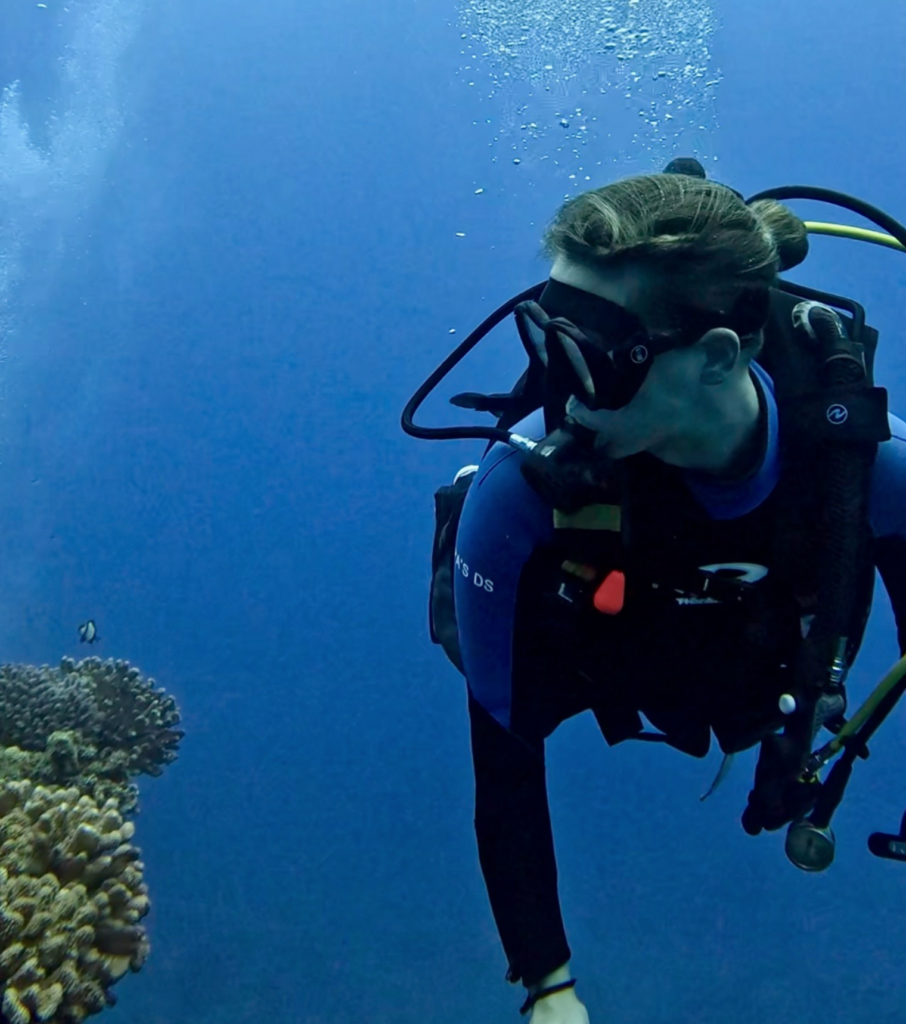
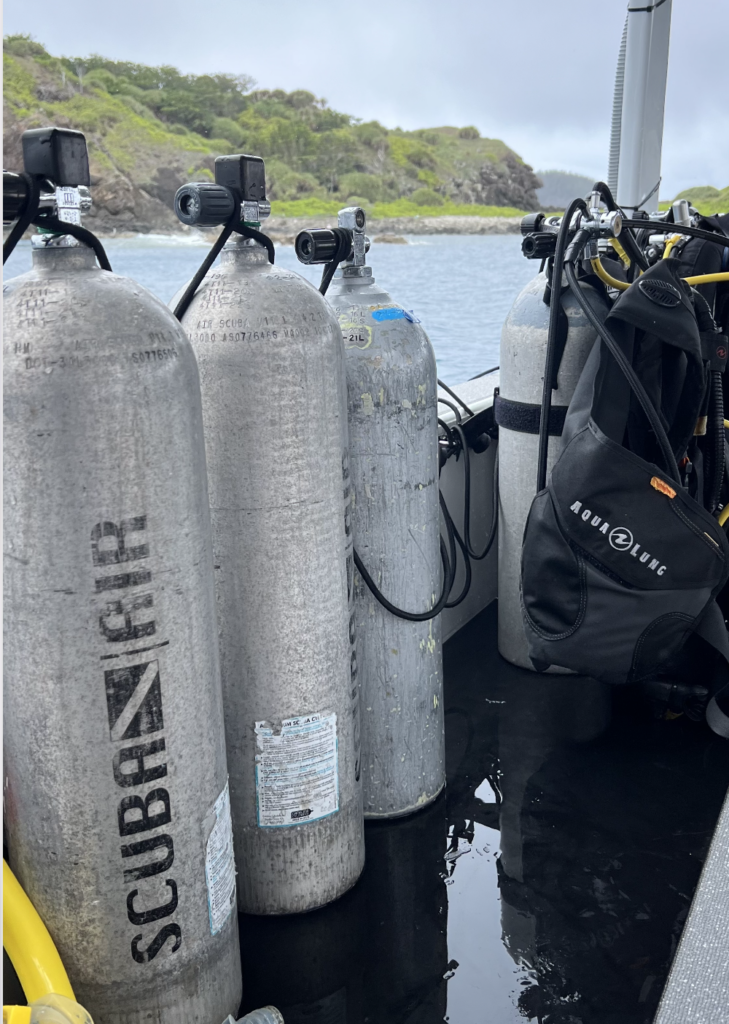
Chichijima isn’t just beautiful on land. The ocean around it has been described as “the Galapagos of the Pacific,” so of course I was dying to see it for myself!
Bright and early, we walked to Papas Diving Studio to go out to explore some WWII shipwrecks miles off shore. It was a stormy day above the water, and it added to the thrilling, spooky vibes when we got down to the wreck. After we hit max depth after the descent, we were surrounded by fish in the shadow of the jagged silhouette of a sunken ship. Once an instrument of war, it’s now a brilliant artificial reef overflowing with vibrant marine life. Lobsters crawling around inside, white tip sharks zigzagging through wreckage, and tropical fish schooling over coral growing on what was once the bow of a warship.
We went out with Papas Island Resort & Diving Studio, a 5 star PADI shop, and had a good experience (definitely make advanced reservations- diving is super popular in Chichijima). Unfortunately as Americans, the language barrier was a little tough for us during the dive briefing, but I felt they did the best they could by drawing out the underwater topography and dive plan for us. I was comfortable as an experienced AOW diver, the equipment was well maintained, and I saw the divemaster respond fantastically in an emergency situation with a new diver.
Food, island quirks, & pokémon
After long days exploring, we’d return to the comfort of Chichijima’s tiny food scene. The island’s izakayas are warm and inviting, filled with the smell of grilled meat, bubbling cheese, and the clinking of sake glasses.
One izakaya we ate at almost every night (and a local favorite!) was Chara. We loved the fresh fish, tempura, skillet camembert cheese, refreshingly tart passionfruit cocktails, and truly everything else we ate there.
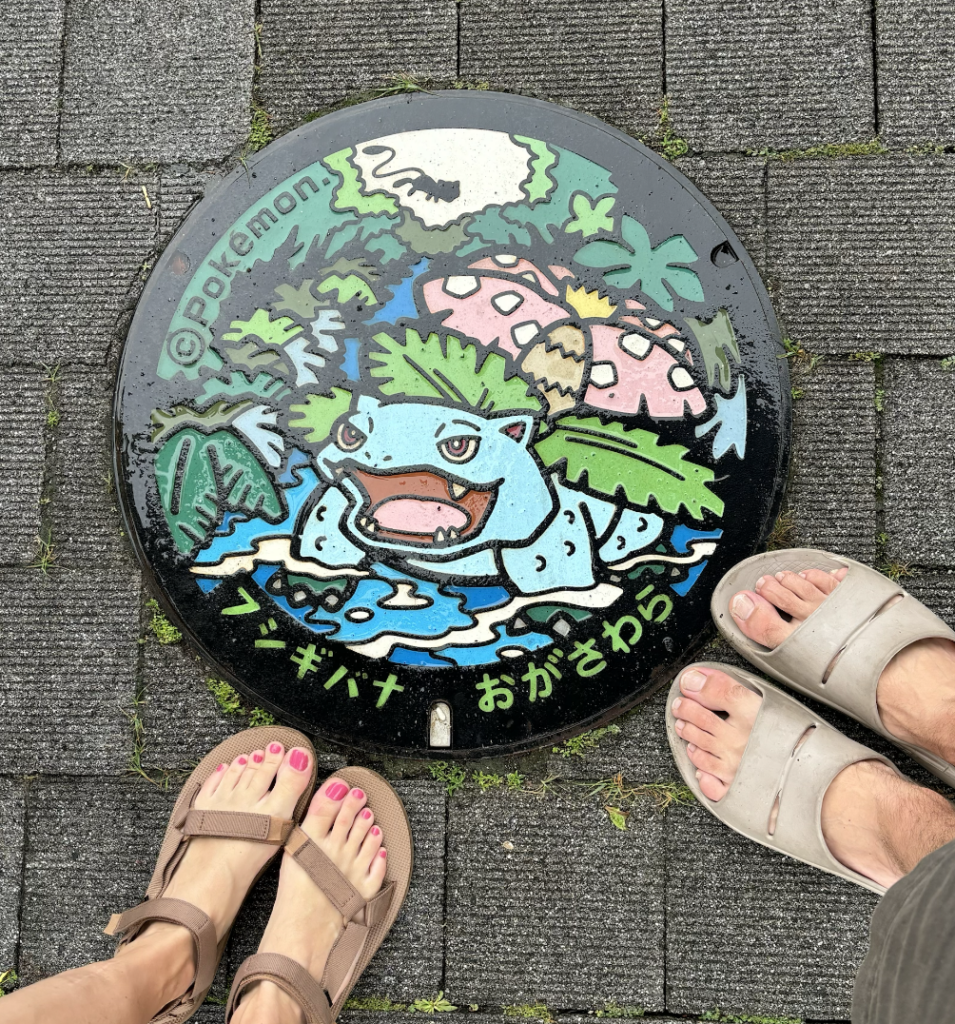
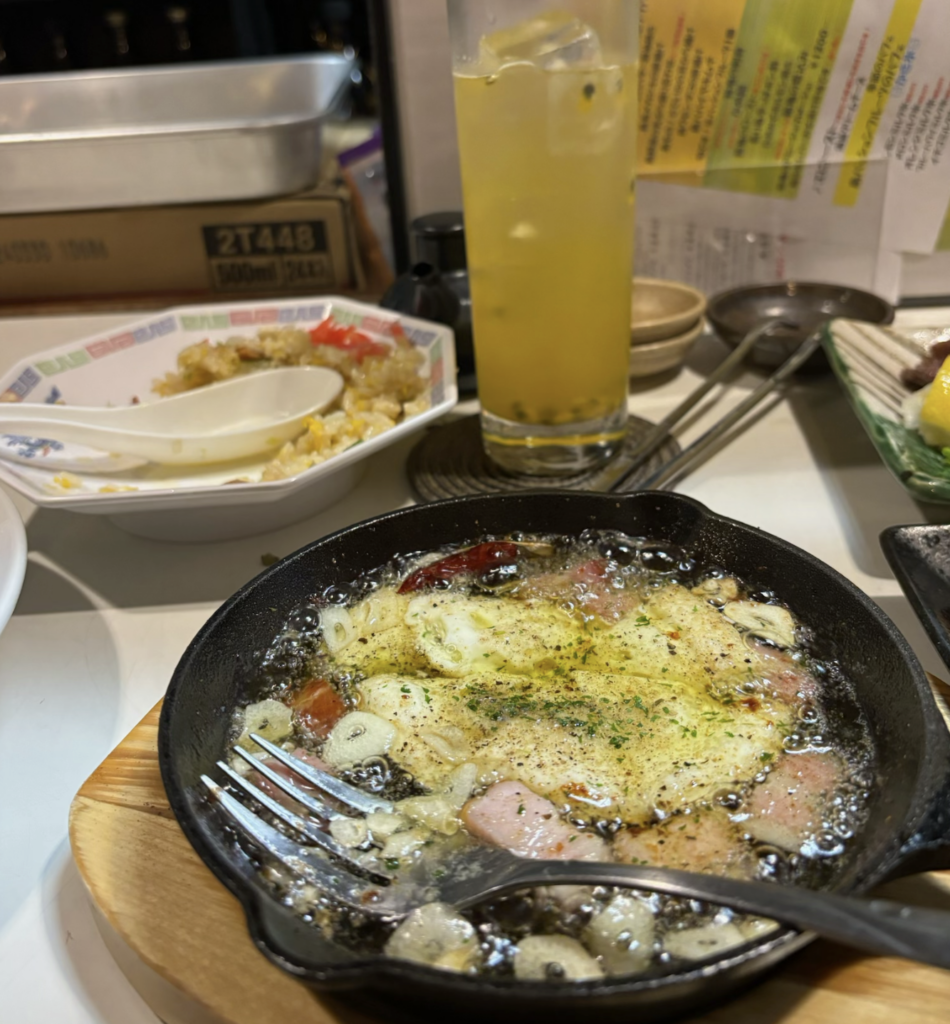
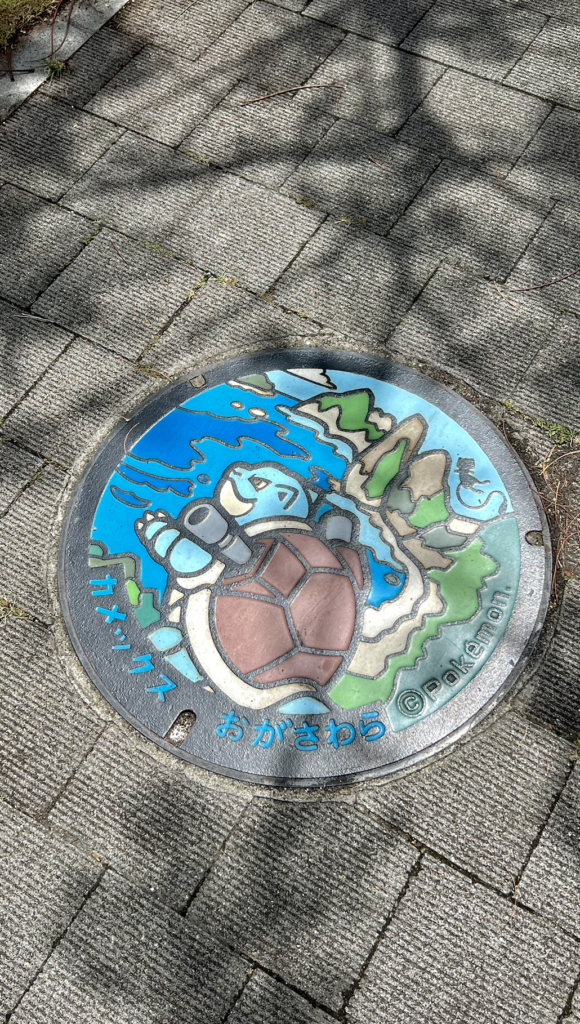
Another quirky, cute thing I love about about Chichijima (and Japan in general) is that most cities have uniquely designed and painted manhole covers. In Chichijima, it was there’s actually a Tourism Bureau-created scavenger hunt for Pokémon-themed manhole covers! This is such a charming little activity across Japan- there are actually groups of people that find and photograph them as a hobby and a randomly huge online community obsessed with them!
Chichijima itinerary (what to do in Chichijiima, best time to visit Ogasawara, etc!)
If you want to plan your own trip to Chichijima, here’s a quick rundown of an itinerary to help.
Day 1
The ferry will arrive between 10-11am, so you’ll be able to have a relatively full day! Start by shaking off the ferry ride at your hotel, renting your scooter or e-bike, and grabbing a bite to eat.
Ride over to Kominato Beach, explore the tidal pools and sea caves, and watch the sunset (one of the best sunset spots on the island!). Go back to town and hit a local izakaya and try to meet some local friends 🙂
Day 2
Take a WWII history tour with a local if possible! You’ll find American-bombed bunkers, old radio towers, tunnels, cannons, and other remnants hidden throughout the island. If you don’t meet anyone willing to point you in the right direction, you can rent a scooter in town and go it solo!
I recommend using Traces of War (a really cool website with detailed locations of interesting, hard-to-find historical sites) to find the coordinates of what you want to see, then plotting those points on a Google Map on your phone! I really think the history of this island deserves a full day.
If history isn’t your thing, take a guided day trip to Minamijima (a close by, uninhabited island with a famously stunning beach!) or to Hahajima, another beautiful island for snorkeling and fossil hunting. In Hahajima, you can really connect with nature and find unique wildlife, like Ogasawara’s native insect and reptile species, or climb up Mt. Chibusa to the island’s highest peak (a ~4 hour hike).
Day 3
Spend the day underwater exploring shipwrecks, or if diving isn’t your thing, snorkel coral reefs just off shore!
You could even do a beach crawl via scooter or e-bike to 3-4 of the best ones (definitely the 3 listed earlier!). Other great things to do on Chichijima are whale & dolphin watching (humpbacks and sometimes sperm whales), birding (HUGE on Chichijima!), or enjoying the observation deck at Ogamiyama Park, located on the north side of the island.
Day 4
End your trip by packing up, grabbing a latte to go from the Papas Island Resort cafe, and doing the walking Pokémon manhole cover scavenger hunt. Maybe spend a lazy couple of hours at one of the beaches for a final dip before the ferry back.
And if you’re wondering what the best time to visit the Ogasawara Islands is, the weather starts to warm up in April. The best time to visit Chichijima is between June-October, and I recommend June/July in particular, when tourist season isn’t at its peak but the weather is perfect!
Where to stay in Chichijima: Chichijima hotels
Hotels are limited in Chichijima, and this isn’t the kind of trip you can book spontaneously. We actually had to wait several weeks in Tokyo after we originally wanted to go because all of the hotels and boat tickets were sold out. Luckily, we were able to lock down a last minute (a couple weeks in advance) booking at a family-owned hostel on the island called the Islander.
The Islander is a cozy, friendly spot that feels more like the storage room in a friend’s house than a hostel. Not luxury by any means, but clean and in a perfectly central part of town.
When we arrived, the hostel owners (a husband and wife duo) were waiting for us at the ferry terminal. After we checked in, it was immediately evident that we could easily walk to everything we needed: an open-air breakfast spot across the street, the scooter rental shop next door, the izakaya one street over, and the scuba diving shop an easy 5-minute walk!
While our hotel was fine, I only recommend it for travelers on a hostel budget with hostel expectations. Other Chichijima hotels that I researched (which were sold out during our trip) that I’ll check for availability on our next trip are:
- Heart Rock Village
- Pat Inn
- AQUA
- Papa’s Island Resort & Diving Studio (fantastic location!)
One of the best parts of leaving Chichijima? Leaving it! But not for reasons you may think.
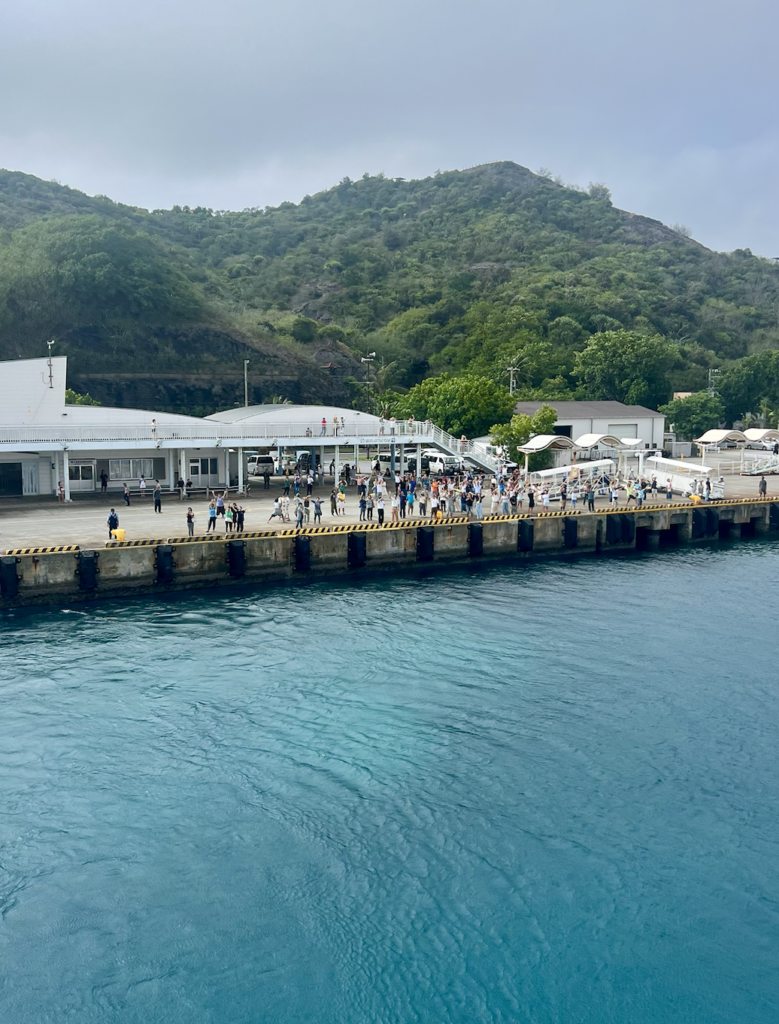
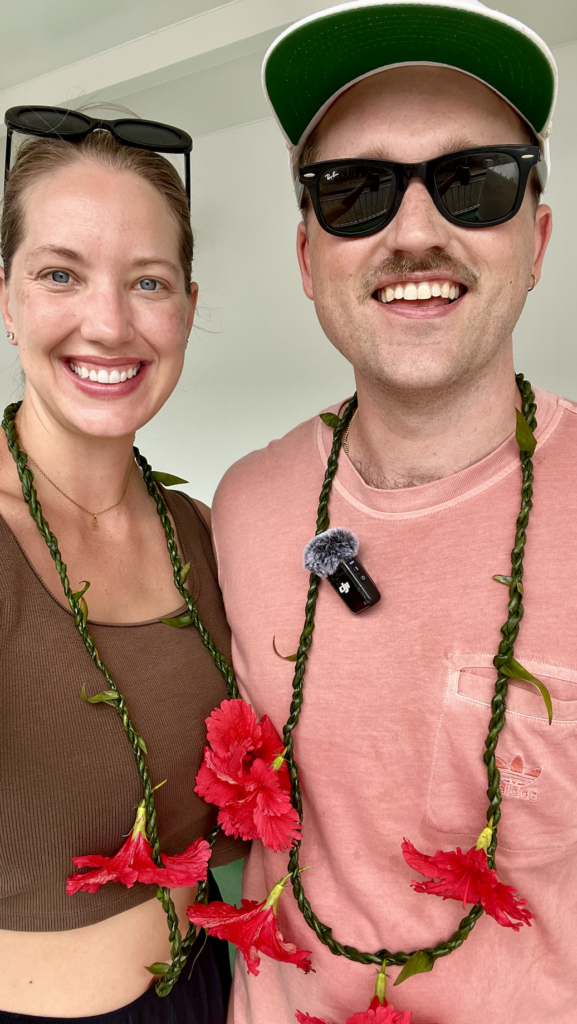
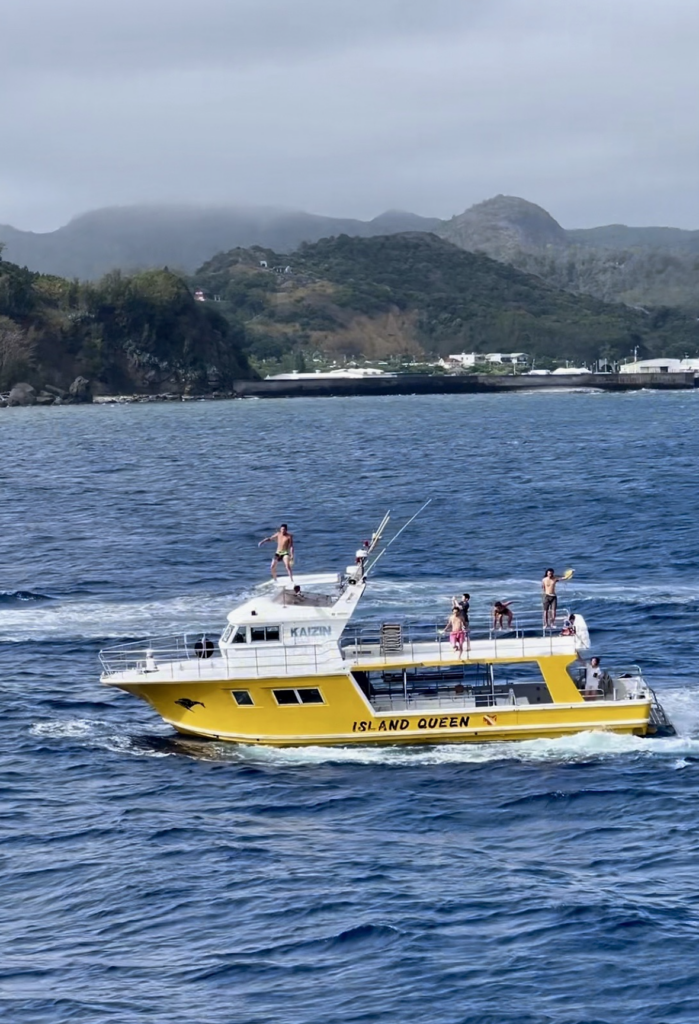
Chichijima is the kind of place that stays with you long after you leave. Exploring an island so far off the beaten path where history and nature are so deeply intertwined was simply unforgettable. Whether you’re here for the adventure or the story, this place has a way of making you feel like you’ve stepped into a piece of a hidden world.
Leaving Chichijima is an emotional experience that captures the island’s unique community spirit. When it’s time for the ferry to depart, island residents and business owners gather at the port for a memorable send-off. Locals make floral leis for departing friends (the sweet local family we met made a couple leis for us! 🥲), a symbolic farewell to the island’s warm hospitality. As the ferry pulls away, those onshore wave and cheer, and everyone on the boat tosses their leis in the water; the story goes that you must eventually come back to retrieve it.
When the ferry pulls away, everyone on the waves and local boats even follow the ferry out of the harbor, honking horns, waving, and diving into the sea from their decks to keep the departing passengers in view a little longer.
This heartfelt farewell is a traditional ritual, emblematic of the deep connections formed between visitors and locals. It leaves an indelible impression on everyone who experiences it, making each departure a fond, if bittersweet, memory.
If you’re ready to venture beyond the typical, Chichijima is waiting. And trust me—it’s worth every minute of that ferry ride.
Looking for other Japan blogs or scuba diving content? Check out my full collection of Japan blogs here, or see if one of these scuba diving blogs is for you!
- Where to go scuba diving in Egypt (no liveaboard!): FULL GUIDE to choosing between Marsa Alam, Sharm el Shiek, Dahab, & Hurghada
- My guide to diving with thresher sharks in Malapascua, Philippines (cost breakdown, best dive shops, what to bring, etc!)
- I helped manta ray conservation efforts while scuba diving in Komodo, Indonesia. Here’s how any diver can do it, step by step!
- I went scuba diving with dugongs in Coron, Philippines. Here’s why I regret it.
- My guide to scuba diving the incredible Lanai Cathedrals in Maui, Hawaii
This blog may contain affiliate links, which means that at no cost to you, I may earn a small commission of any products sold. I only feature products that I believe in and use. Your support means the world to me and allows me to host this website!
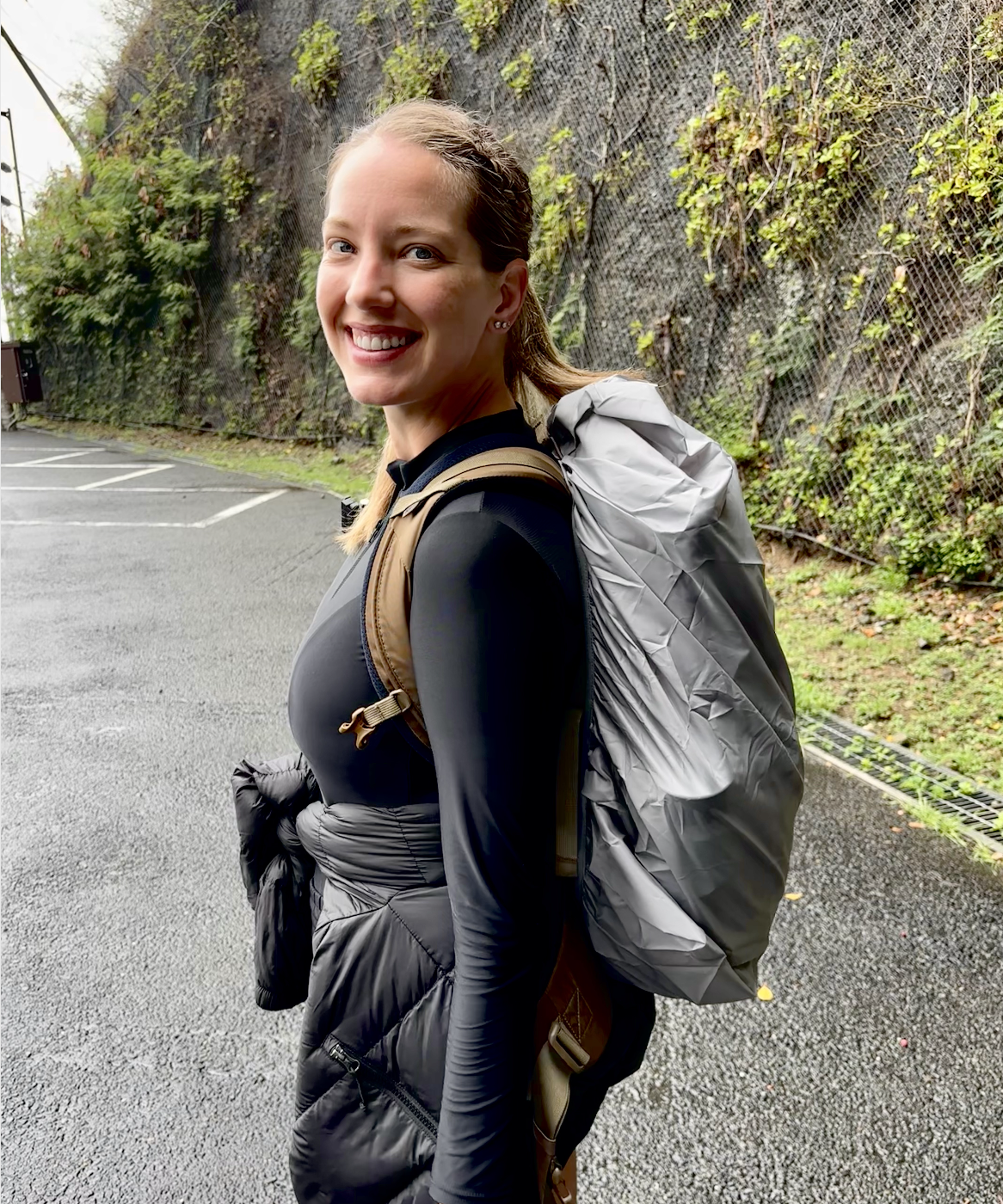
Hi Sarah! Cool blog and nice looking website!